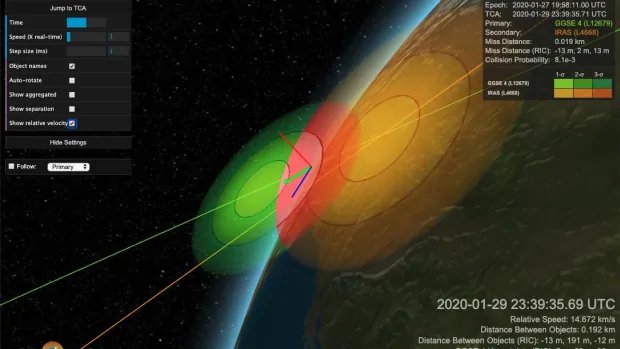Good news — satellites on potential collision course missed each other

Two defunct satellites that looked as though they might collide Wednesday evening have missed each other.
Private satellite-tracking company LeoLabs tweeted that it was “pleased to report” that following the projected close encounter between the two satellites, it saw no evidence of new debris.
We are pleased to report that in the first several radar passes of the two objects after the close approach, we see no evidence of new debris. This event has served to highlight the collision risks caused by derelict satellites in LEO.
—@LeoLabs_Space
The company had predicted the two satellites would pass within 15 and 30 metres of each other above Pittsburgh on Wednesday at 6:39 p.m. ET. That put them at a 1-in-100 risk of a collision that could potentially create hundreds of pieces of space debris, threatening satellites in a similar orbit.
The first satellite, the Infrared Astronomical Satellite (IRAS), a joint venture between NASA and the Netherlands Agency for Aerospace Programmes, was launched in 1983 and is roughly 954 kilograms. The second, smaller GGSE-4 (also known as POPPY 5B) was launched by the U.S. Naval Research Laboratory in 1967 and weighs about 85 kilograms.
LeoLabs said the near miss “served to highlight the collision risks caused by derelict satellites in LEO [low-Earth orbit].”
It said it would continue to monitor the space environment for similar close approaches and flag high-risk scenarios.





